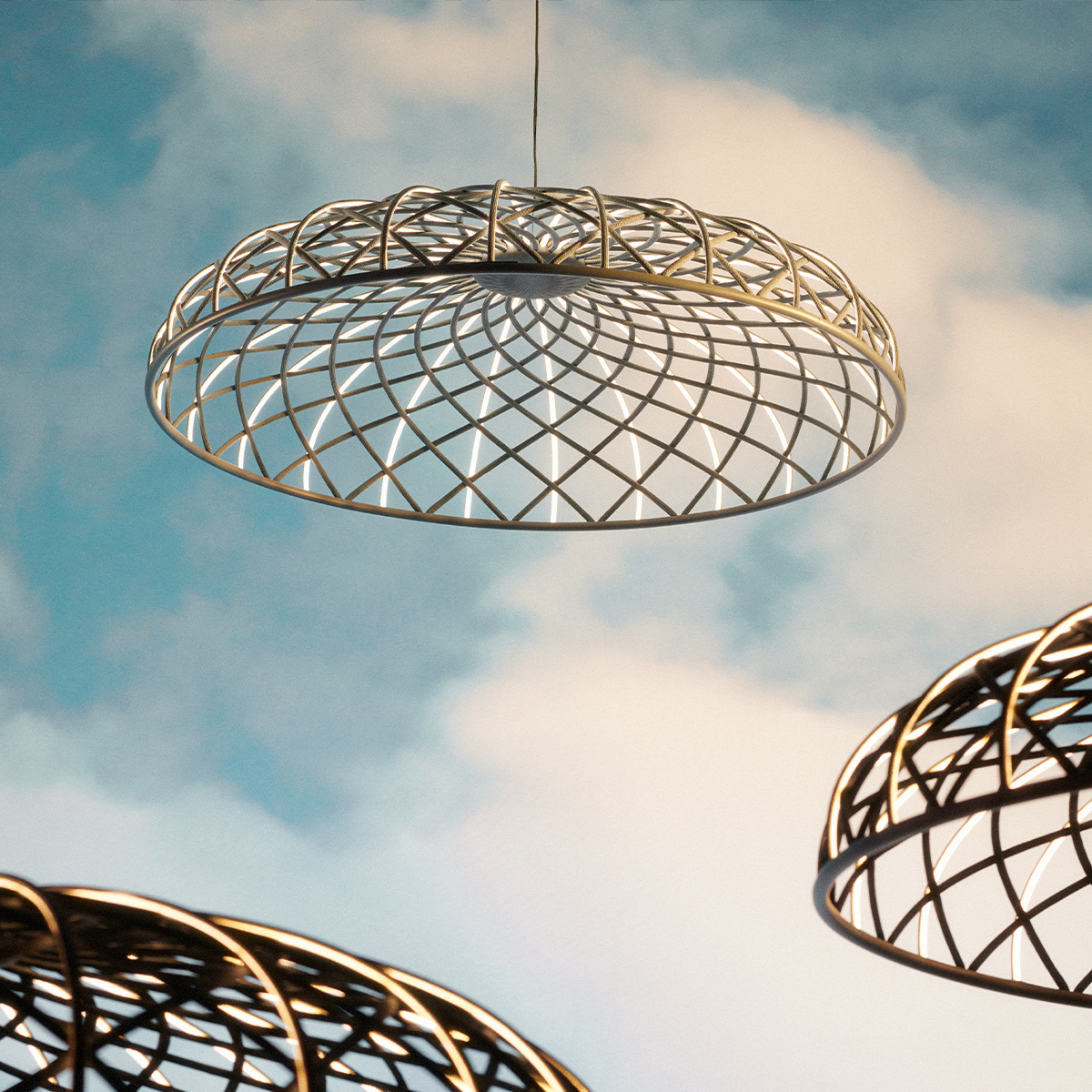[ad_1]

From recycled materials to solar-powered factories, the international design community is redefining what it means to place sustainability at the center of their craft, both in ethos and in practice. With throwaway culture now a relic of the not-so-distant past, we set our sights on an eco-friendly future that values a positive environmental impact just as much as it values good design.
Over the last year, European brands have been quick to adjust their design practices to abide by the EU’s latest Eco-design Framework regulation: The Right to Repair law, which encapsulates electric home appliances—including lighting fixtures—that account for 40% of the EU’s greenhouse gas emissions. A decade-long initiative, the Eco-design Framework seeks to improve the energy efficiency and sustainability of products made (and sold) in Europe.
Circular Culture: Replace, Recycle, Reuse
This latest regulation is three-fold. First, the product must be designed in a way that allows dismantling without malfunction. Second, each part must be replaceable and requires manufacturers to provide spare parts for up to 10 years after the purchase date. Third, and perhaps most importantly: Once disassembled, each component of the product should be properly recycled, where their lifecycle can begin again as secondary raw materials.
The effect? With more conscientious production and consumption, fewer appliances will end up in landfills, and the EU estimates an overall reduction of more than 46 million tons of CO2 per year. In addition to combating the climate crisis, the regulation also has the power to affect design culture at large while reducing the globe’s reliance on a waste-based economy.
Beyond the Trend: Sustainable Design is Timeless Design
Under “Right to Repair,” products must be, quite literally, sustainable by design. Across the EU, brands like DESIGNHEURE and Petite Friture have revised their design process to account for the entire lifecycle of a product—including its reassembly, repairability and recyclable potential—all without sacrificing functionality or style.

What might be interpreted as an obstacle to production can equally be viewed as a creative restriction that inspires an eco-friendly, environmentally conscious wave of design. Amelie du Passage of Petite Friture remarks that her brand is “very conscious of the way we build our products,” which can be seen in the latest edition of the Vertigo Nova collection by Constance Guisset. Petite Friture has long been invested in sustainability as a tenet of the brand, and the requirements of “Right to Repair” finds the founder and designers comfortably at home in their ethos which encourages a design practice that embraces notions of “circularity, repairability and replaceability.”

In Vertigo Nova, a built-in, dimmable LED light source extends the fixture’s lifespan and spare parts are available should the carefully designed pendant break, while other Petite Friture designs incorporate eco-conscious materials like stainless steel and aluminum. Designer of the Vertigo series, Guisset has said that not only does sustainability affect the materials used in a given product, but the design of the object itself must go “beyond the trend” in order to stand the test of time.
Across the Pond: Sustainability for Stateside Designers
While France has made it illegal to destroy clothing and other textiles, and the EU successfully phased out the use of incandescent lamps, the U.S. has been slower to adopt such radical and official sustainability measures. Twenty-one states have considered legislation similar to the EU’s “Right to Repair,” but only Massachusetts successfully passed such a law.
Without government regulation, the decision to incorporate sustainable policies and design practices falls to the brands themselves, and a few of our favorites are passing with eco-friendly flying colors.
Born from the challenge to create a truly sustainable lighting system, New York City-based Stickbulb is an innovative pioneer of lighting fixtures that rely on reusable and locally sourced materials that tell a story. Using reclaimed wood from decommissioned New York City water towers and building teardowns, Stickbulb’s customizable, energy-efficient LED fixtures are constructed from as few components as possible which can all be completely broken down and recycled when the time comes.

“If sustainability is built into the DNA of a company from day one,” said Cerno’s Bret Englander, “it doesn’t have to be that big of a challenge.” Known for modern, California-made lighting and furniture designs, Cerno uses high-end, high-quality parts that provide their products a long life. While sustainability is built into the core of materials and production for many brands, Englander also said that “packaging can become one of the largest obstacles.”
Ordering the most sustainable product that’s locally made from ethically sourced, recyclable components is only half the battle if the product arrives full of plastic packaging with Styrofoam packing peanuts. Robert Sonneman of SONNEMAN Lighting says that while his brand is motivated to create its products in a more responsible way, he is equally committed to removing all plastic foam from packaging, instead pivoting toward the use of paper and other recyclable materials. ANDLight’s Matt Davis has made a similar pledge and says that the brand is working to remove all single-use plastics in 2023, which includes vendor materials received at the ANDLight factories.

For brands to participate in the EU’s economy, the “Right to Repair” requires they take seriously their commitment to sustainability. Creating products that are designed with reassembly and repairability in mind is a small but mighty way to transform our relationships with production and consumption while combating throwaway culture and the costly depletion of natural resources. From Stickbulb’s principled use of recyclable materials to Petite Friture’s embrace of a product’s circularity, consciously designing a future that prioritizes sustainability affects us all.
The post The EU’s ‘Right to Repair’ Law first appeared on The Edit | Lumens.com.
[ad_2]
www.lumens.com










